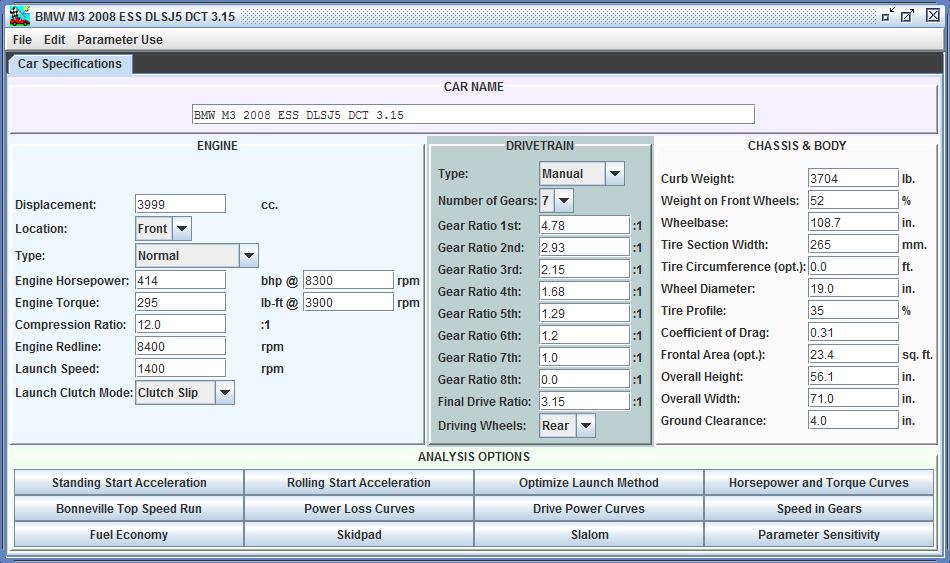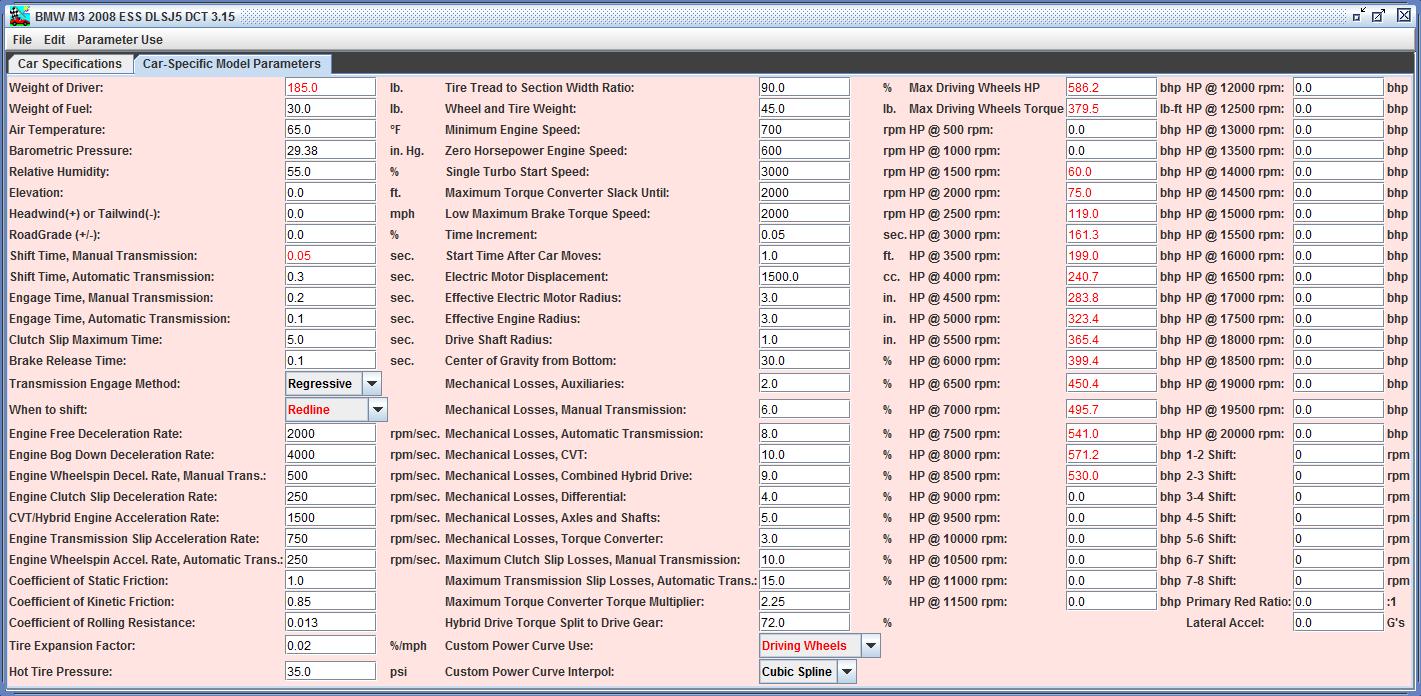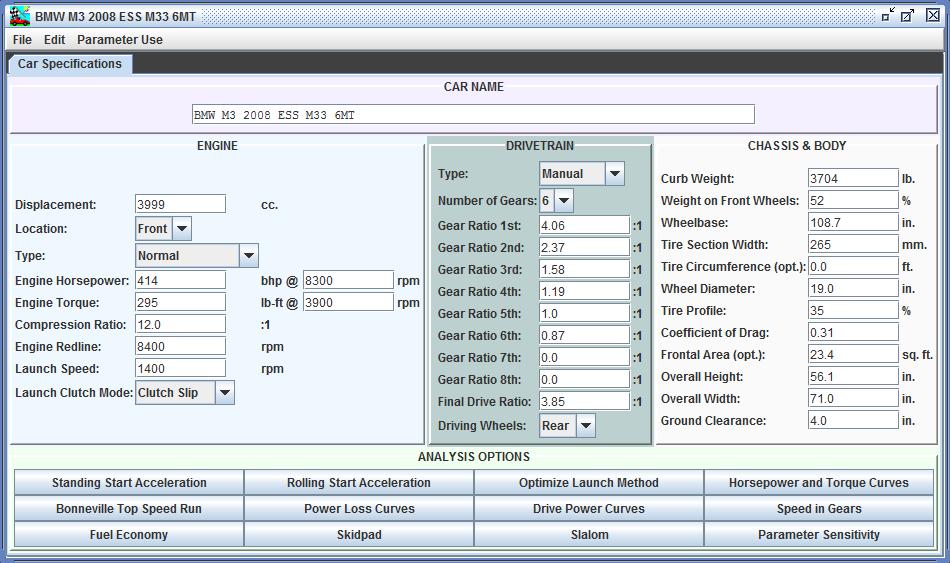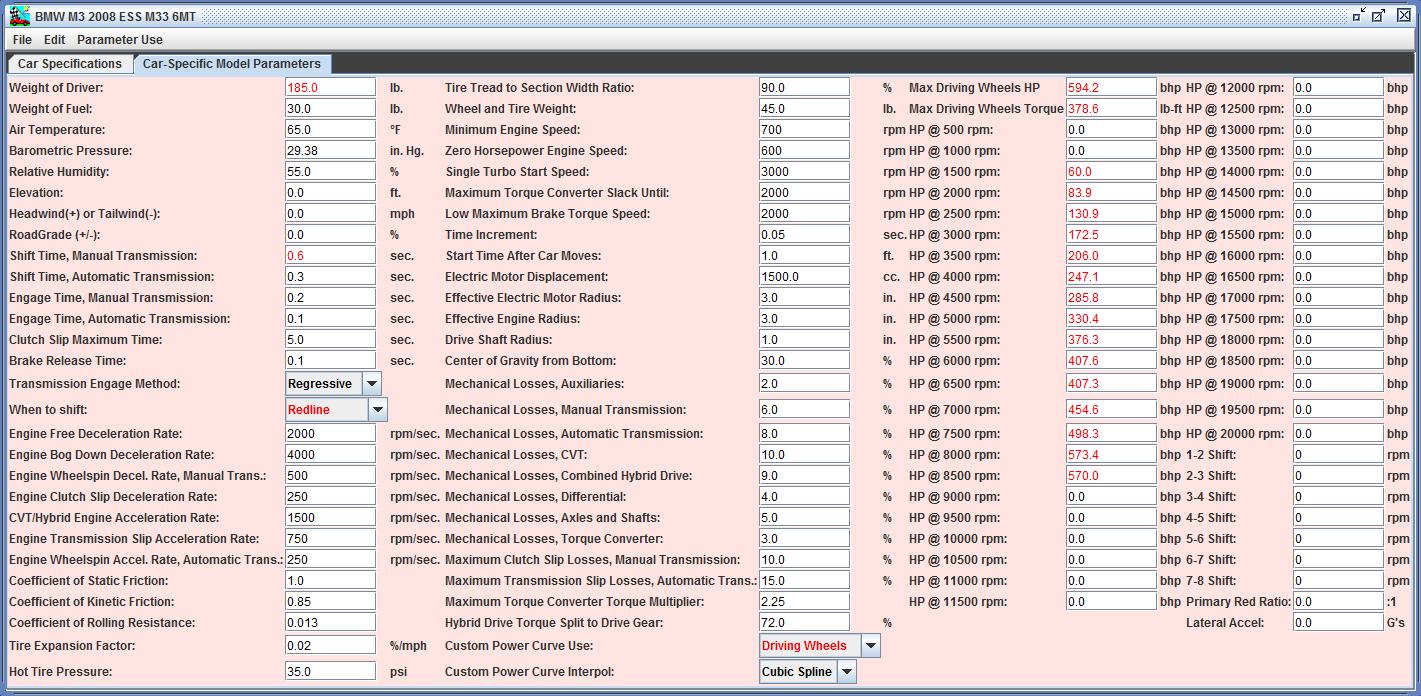Quote:
Originally Posted by swamp2

Wow not even sure where to start here. In
short this is pretty much all incorrect. It looks like we will
probably get way off topic but I can't let this rubbish slide.
- Assuming good traction, good launch, etc., power to weight is
what determines ET and trap speeds. I don't often side with Sticky
but he is essentially right here. Everything else is a much
smaller factor.
- Sure if you have a crappy driver in a MT who takes 0.6 seconds
to shift, yes this will hurt your ET and trap by quite a lot but a
fast shifter can shift a MT in closer to 0.25-0.3 seconds and we
should assume this is happening to give a MT a fair shake.
- I've been a strong and long term proponent of DCT over MT for
performance reasons. It does matter but it does not matter nearly
as much as you and your referenced info claim. According to both
simulations and empirical test results DCT (in a stock M3) is good
for about an equivalent of 15-20 hp. That in turn is only good for
a few tenths in the 1/4 mi.
- The advantage of DCT is almost entirely due to shift speed
advantages, not gear ratio differences. This also has been proven
out with simulation quite well. Where DCT gear ratios shine, that
is not related to drag racing, is coming out of a corner at an
equal speed to a MT in 2nd or 3rd gear. The overall ratios are
quite a bit higher and thus the DCT will come out of corner much
harder and pull ahead.
- The cars that were compared in this "re-enactment" simply DO
NOT have anywhere close to the same power. I don't care what the
dynos say, different dyno, different conditions, different days,
different tunes, different operator, etc. How many differences do
you need? The DCT car in this case had substantially more power,
period. If the two cars actually had 586 and 594 hp respectively
their 1/4 times would be within 0.3 sec ET and 3.5 mph trap,
accounting for the DCT advantages and assuming a 0.3 second shift
time.
- It takes about a 75 hp difference and the DCT->MT disadvantage
to provide a true 9 mph trap speed difference.
- Even a really terrible shift time of 0.6 s in the MT would only
account for about half of the observed ET differences here.
Again... apples to oranges, period.
- Have a look at some stock M3 quarter mile results differences
between DCT and MT. Here we have very high confidence that both
cars will be making VERY close to the same power.
- If you really think this is a true apples to apples comparison
of DCT vs. MT then I have some great business ideas centered
around selling sand to some Arabs that we should really discuss in
detail in person.
Ugh... |
Swamp, this is one of those times you should have actually done
some of those simulations that you're talking about to see what
happens in the results. I just did, and it seems to match these
actual street results quite well. If fact, I'd say they match
perfectly well.
I've looked at many 6MT vBox graphs, and 0.6 seconds is the
fastest shift speed I've ever seen. Most are about 0.7, and some
are 0.8 seconds. That's measured from the time long-acc drops, to
the time it returns. So that's the amount of time from clutch in,
to clutch out and full engagement.
Since you're a CarTest fan, you'll appreciate looking at the two
charts below. As you know, you can input actual dyno charts into
CarTest. If you do this, then these are the results. The same
exact car model was used for each car, both listed at 3704 pounds,
and 6MT using a 0.6 second shift time -- which is the fastest I've
ever seen on a vBox file. The DCT used 0.05 seconds shift time.
The first chart compares the same dyno chart from an ESS VT2-600
(517whp) in both DCT and 6MT.

The graph above shows 0.61 seconds difference, and 8.53 MPH
difference in the 1/4 mile, along with 1.2 second difference
60-130 MPH (yes, a whopping 1.2 seconds difference 60-130 MPH).
If you change the shift speed to 0.4 seconds (seems impossible
based on actual collected vBox data), the results become as
follows: 0.41 seconds difference and 6.27 MPH difference in the
1/4 mile, along with 0.95 second 60-130 time. You'll notice that
CarTest predicts an additional 2.26 MPH trap speed difference
simply by changing the shift speed by 0.2 seconds.
Now, let's do the same thing using the actual dyno charts from
DLSJ5 (DCT @ 586whp) and M33 (6MT @ 594whp). Here's the CarTest
results below:

As you can see, using 0.6 seconds shift speed for the 6MT, it
loses in the 1/4 mile by 0.67 seconds and 9.91 MPH in the 1/4
mile, and 1.68 seconds 60-130 MPH. Then if we reduce the 6MT
shift speed to 0.4 seconds (again...a seemingly impossible task
based on actual collected vBox data), the 6MT loses by 0.46
seconds and 7.48 MPH in the 1/4 mile, and loses by 1.42 seconds
60-130 MPH.
Swamp, there is quite a bit of real life data collected in vBox
files. Those files show the 6MT is quite a bit slower than the
DCT for similar configurations. For whatever reason, you're
chosing to ignore it and substitute your own. You love CarTest
and talk about all of these simulations, but this is one case
where you should have used it and seen the results for yourself.
The CarTest simulations back up exactly what is one those vBox
files and that "re-enactment" referenced above.
Feel free to download the actual dyno charts from DLSJ5 and M33
from the Dyno Database, imput them into CarTest, and publish your
own versions based on these same dyno charts. For your reference,
here's the values used in CarTest for each vehicle. If you can
spot something wrong, please point it out so it can be fixed and
simulations re-run. But only do that if you are convinced that
something is so egregiously wrong that you think it will
significantly change these results -- which also seem to match
real life quite well.
Parameters for DLSJ5:


Parameters for M33:

